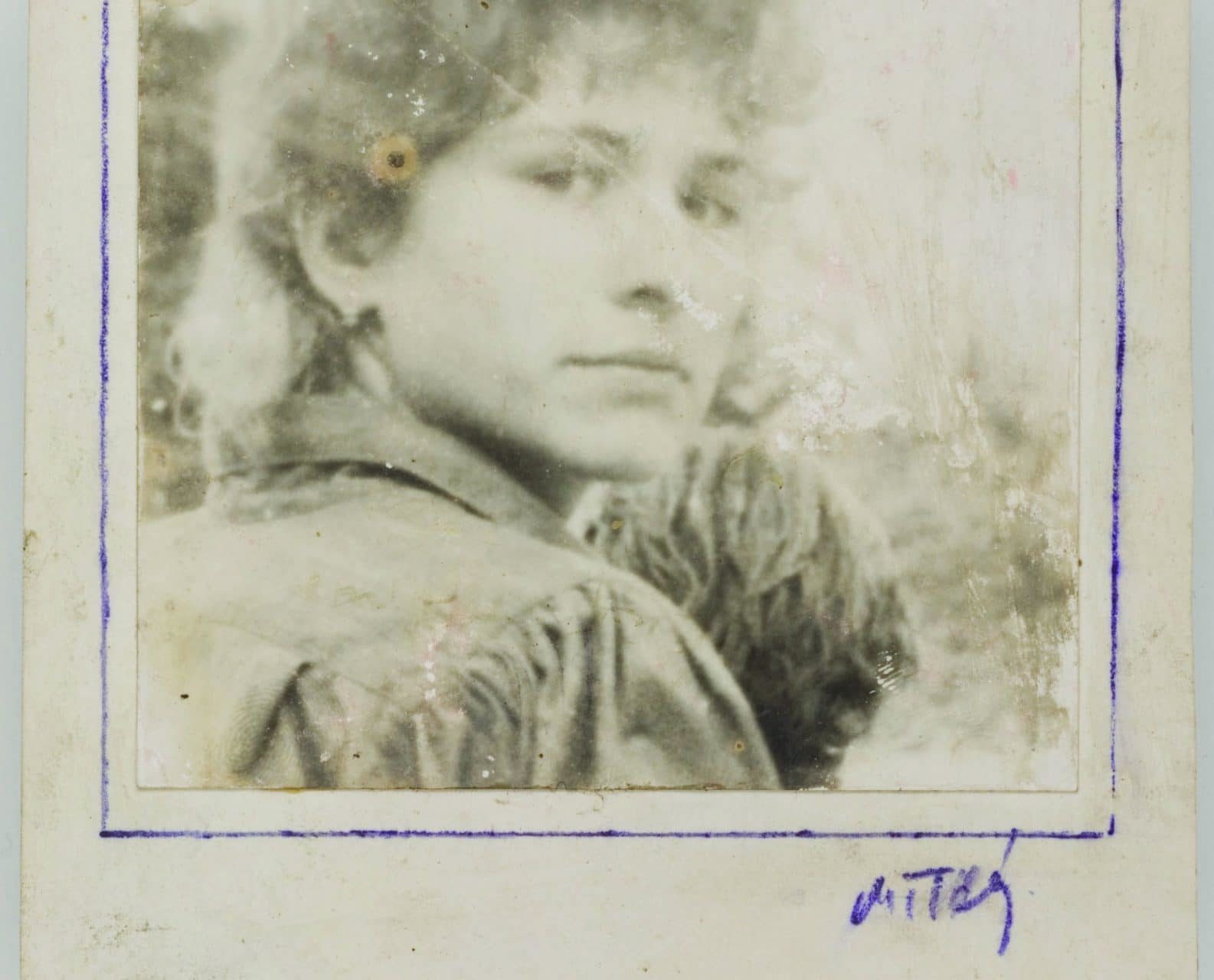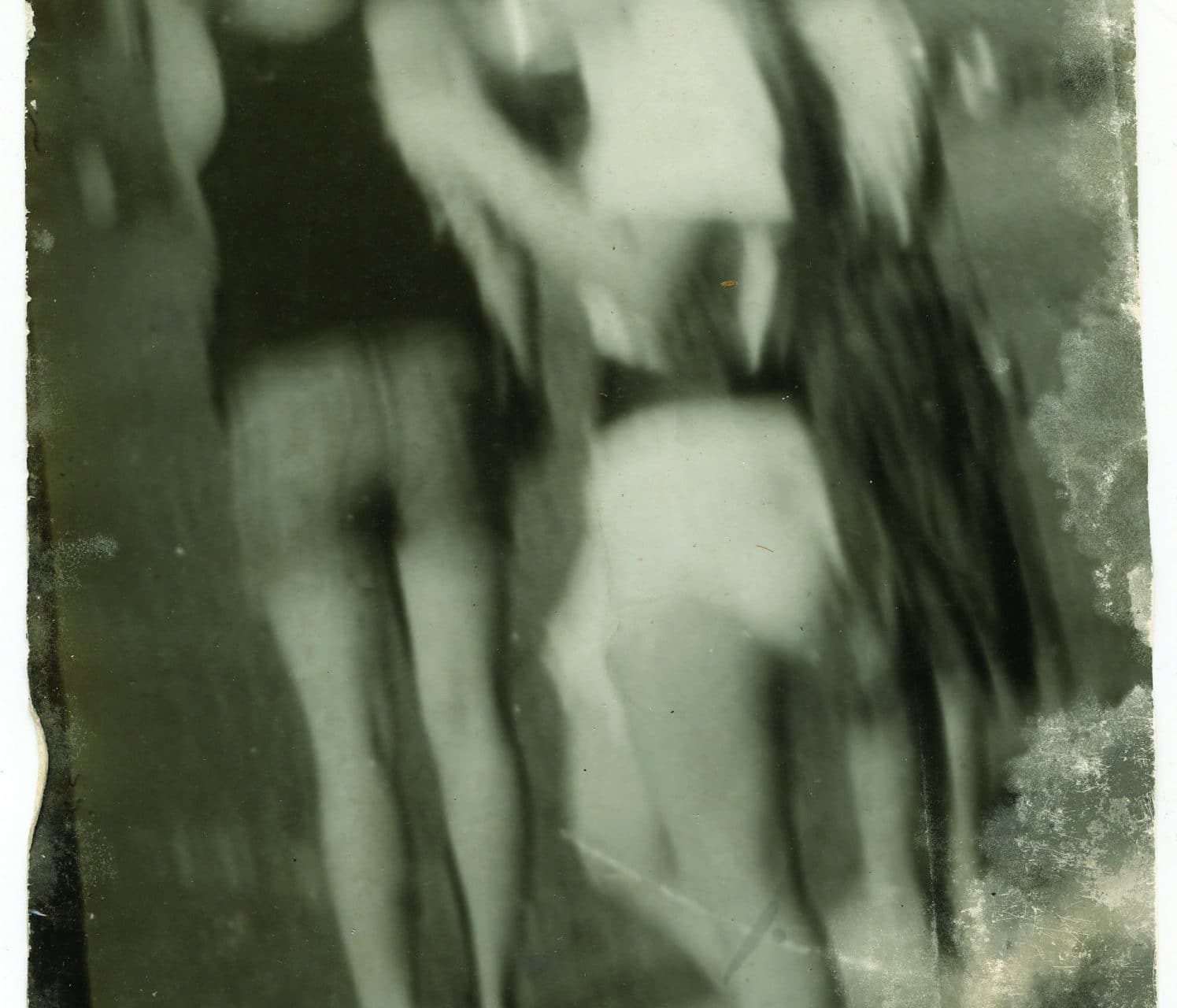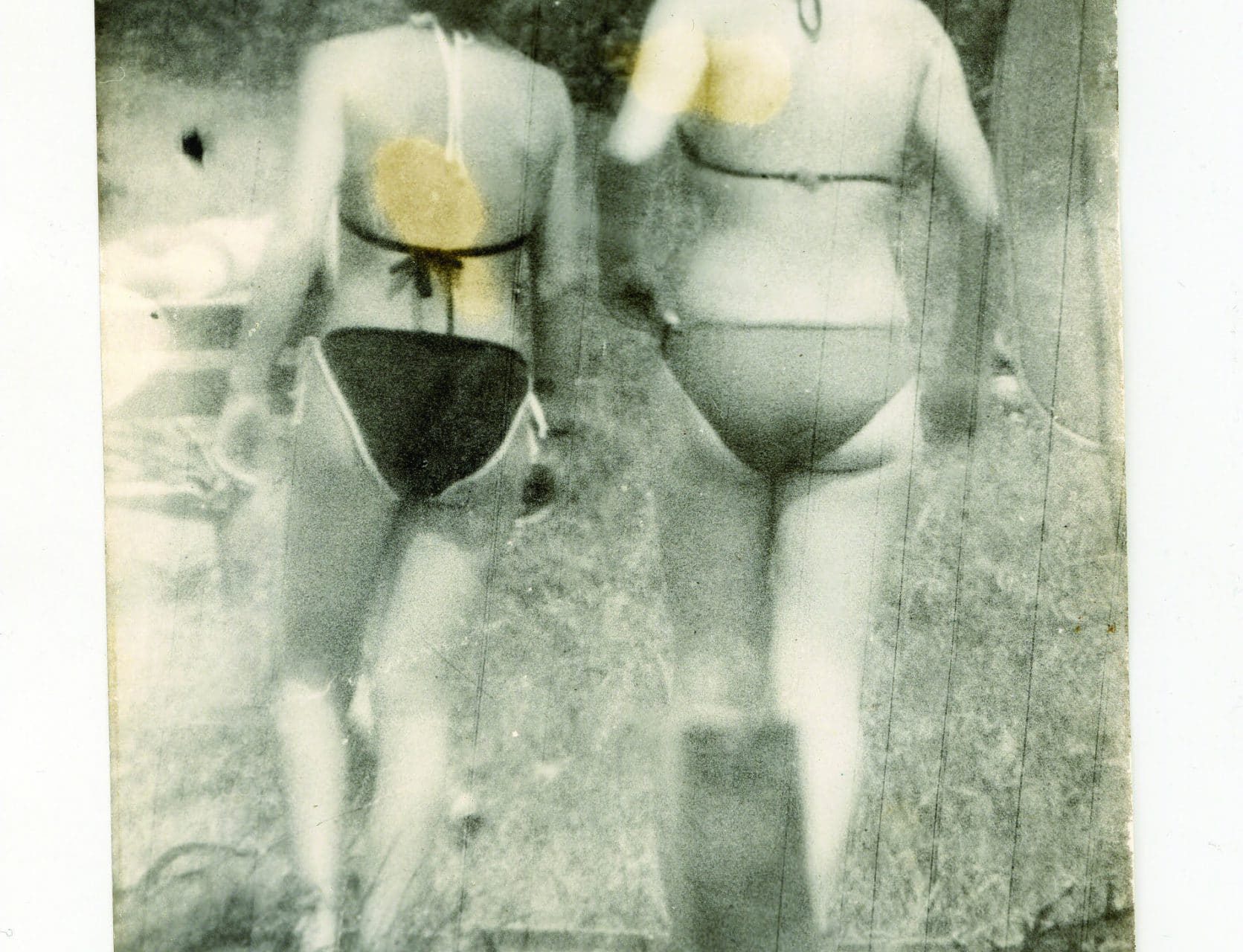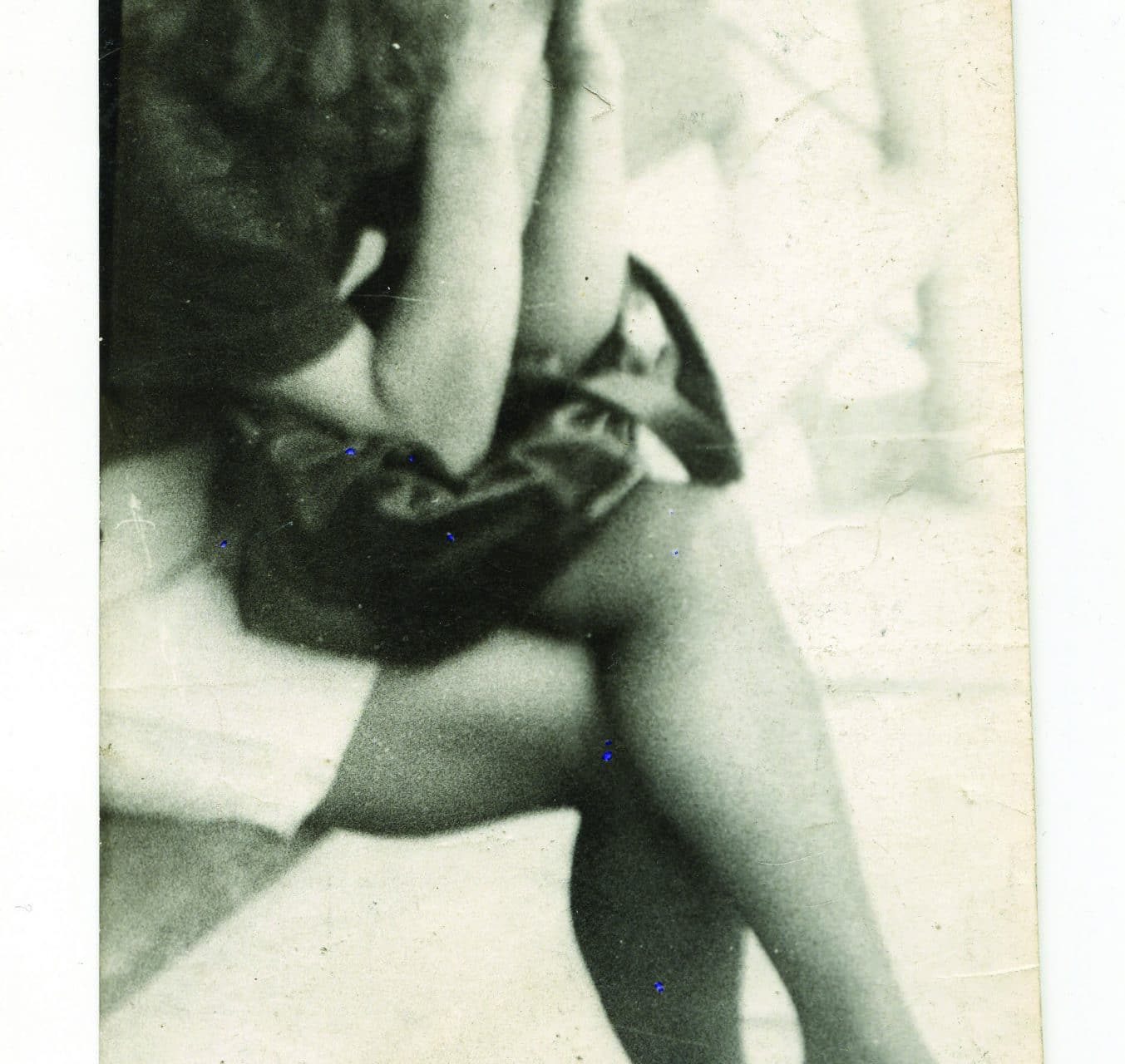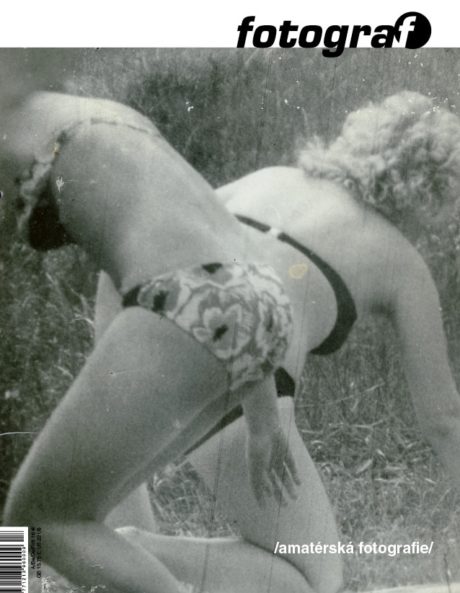Miroslav Tichý
The Private Images of Miroslav Tichý
Art historian René Huyghe aptly noted that “a work of art is a fruit that has fallen away from the tree”.[ref]Huyghe, R.: Řeč obrazů ve světle psychologie umění. Odeon, Prague 1973,s. 132.[/ref] This is perhaps the best way to describe the fortune of the photography of Miroslav Tichý (20.11.1926 Nětčice – 12.4.2011 Kyjov). The fruit tastes of the tree from where it comes, but a certain quandary appears here. During Tichý’s New York exhibit, the Financial Times critic Ariella Budicková[ref]Budick, A.: Miroslav Tichý, International Center of Photography, NY. www.ft.com 10.2.2010.[/ref] summarized his unsettled fate into a single sentence – he left the academy where he was studying painting, and experienced several psychotic collapses. Zurich psychiatrist with roots in Kyjov, Roman Buxbaum, saved Tichý’s work for himself and the world, when he began collecting his photography back in the 1980s. He always spoke guardedly of the mental state of his ward, neatly labeling his invalidity retirement a “health pension”.[ref]Buxbaum, R. – Vančát, P.: Miroslav Tichý. 11000 Prague 2006.[/ref] He stated that ever since the 1950s, Tichý had been in and out of psychiatric hospitals in Opava and Kroměříž. The result of his illness apparently led to a change in personality in the form of desocialization (loss of normal social ties), later to development of eccentricity. Already by the mid-1950s, Miroslav Tichý engaged marginally in a creator’s life, but stopped painting by the 1970s. During the period of “normalization”, he was prevented from going to the Kyjov swimming pool, and was taken from his job as an official and placed in a psychiatric treatment center, so as not to interrupt the “dignified course” of May or November (communist) celebrations. This speaks of the stupidity, aggressiveness and weakness of the totalitarian regime.
Miroslav Tichý was ridiculed by most in the small South Moravian town, yet admired by protesting adolescents, for whom he embodied the freedom of long hair and punk clothing back in a time when nobody in Kyjov knew what punk was. He created photographic work that was difficult to comprehend. His photographs were taken in an urgent, obsessed manner for around three decades. Women were always the dominant object of Tichý’s interest. In the compositions of individual photos, there is a clear trace of creative training at some point in his past; mainly his capturing of figures in motion was exceptional. In terms of genre, the artist directly links back to classic painting: portrait, torso, figure, group of figures, urban vistas. His still life work exudes a character of objet trouvé, and a bra for sixty Crowns in the shop window represents an inaccessible object of desire more urgently than other images. But we discover few symbolic motifs, and humor is almost completely lacking. He always placed the image’s storyline into the first plane, attributing the importance exclusively to the figure in the foreground. Many photographs taken with a conventional lens and ordinary cameras also portray the reactions of those photographed, from wonder and surprise to girls posing in swim suits with clearly provocative subtext. In what are apparently later works, Tichý lost contact with his involuntary models. This is partly the result of using telephoto lens “specialties” of his own manufacture (after “aging” somewhere in a courtyard, these lenses may be conspicuously reminiscent of the aesthetic quality of František Skála’s rusting cars), and partly because he focused attention to shots on the television screen with erotic – or rather soft porn – programs during night broadcasts of Austrian (?) television. Miroslav Tichý stopped photographing in the 1990s.
Researching his work is mainly difficult because of the basic evaluating position: admiration or rejection? The polarity of positions nearly keeps one from dealing with the question of what his works mean regardless of the tree from which they come… Initial difficulties arise from the lacking chronology and definition of Tichý’s style, not to mention his development. The artist approached photographic technique in alternative ways. He applied original methods of brutal primitivism that were utterly beyond the norms of black and white photography. The scratched, fuzzy or foggy, incorrectly exposed photographs with a veil, and prints that are dirty, torn, moldy, mouse-eaten and bearing spots of photo-chemicals and those of unknown origin are reminiscent of watercolor painting or graphic techniques such as etching. He would take the photos, recognized as an authorial selection, and glue them or affix them to mounts using cardboard or other ordinary materials. He then artistically completed the mounts, colorizing selected prints or drawing on them. The signature on the front side indicates his authoring of certain photographs as works of art, but he would then lose interest in them.
Though he spied on girls and women in Kyjov on the streets and local swimming pool, later separated by a fence, it would be unjust to label Tichý as a voyeur, because the very crux of photography lay in observing and symbolic appropriation. Of course there is blurred line between ordinary curiosity as an expression of enabling instinct and snooping.
In terms of content and style, Tichý’s photography most closely relates to private erotic photography, which was until recently a hidden phenomenon, and therefore insufficiently studied. Mass publishing of these private matters has only grown recently in today’s Internet age. Amateur erotic photography and videos are created today with the aim of later publishing, and their authors regularly create them as works for the commercial photography industry. Also in Tichý’s work, one may see a move from gentle images to interpretations of pornographic genres.
At the urging of Roman Buxbaum, Swiss curator Harald Szeemann backed the idea for the first international presentation of the photography of Miroslav Tichý, at the Biennale of contemporary art in Seville (2004). Szeemann is very knowledgeable of the creative works of mentally disturbed artists. In 1963, he exhibited a collection of German psychiatrist Hans Prinzhorn; this particular selection was also exhibited in Prague in 2009. Other prestigious world galleries have exhibited the photography of Miroslav Tichý, and these unique artifacts fetch high prices at auctions. The worldwide success of his photography occurred thanks to active marketing and the complicated backdrop of the art market, where refined photography of technically trained artists vie for attention. The authenticity and originality of the work, as one with Tichý’s life, piqued the interest of the pampered public and choosy curators alike. Publicizing his photography makes us all unwelcome visitors, voyeurs into the privacy of the author, who wished to remain out of the spotlight and who tried to prevent later exhibits and sales. The fact that Tichý’s photographs were plunged by the “culture industry” and art market into the public arena could be deemed a veritable attack on the free will of the author to not publicize the works or to destroy them.
As a consequence of knowledge of creative experiments and art brut, the public is mentally geared towards accepting any kind of exclusivity. Of course, thanks to academic training, Tichý does not fulfill the ordinary criteria of art brut. Neither may he be considered an amateur photographer. On the contrary – the loner who ignored the technical possibilities of photography and contacts with colleagues represents a denial of photo-amateurism as a lifestyle phenomenon and a way of spending free time.
There is a lot of catching up to do in critical assessment of Tichý’s photography. The effort for a positivistic understanding[ref]Freiberg, J.: Miroslav Tichý. Fotograf 10, 2007, pp. 46-47.[/ref] and inclusion into the context of Czech photography[ref]Birgus, V. – Mlčoch, J.: Česká fotografie 20. století. 11000 Praha 2009.[/ref] contrasts with a narrative and effectively romanticizing approach. Gianfranco Sanguinetti attempted to decipher Tichý’s work ideologically.[ref]Sanguinetti, G.: Les formes du vrai / Forms of Truth. 11000 Prague 2011.miroslav tichý The Private Images of Miroslav Tichý[/ref] Perhaps there lacks only interpretation from a thoroughly feministic viewpoint…
I am convinced that reactions to the publishing of Tichý’s photography represent one of the important signals of the end of photography as an objectivizing testimony of the outside world. This is the end of photography as we knew it in the twentieth century; mainly closing are the chapters of humanistic photography and documentarism. Hand in hand with digitalization, irreversible changes are occurring in the position of photography in art and the post-shortage- ridden society.
#17 Amateur Photography
Archive
- #45 hypertension
- #44 empathy
- #43 collecting
- #42 food
- #41 postdigital photography
- #40 earthlings
- #39 delight, pain
- #38 death, when you think about it
- #37 uneven ground
- #36 new utopias
- #35 living with humans
- #34 archaeology of euphoria
- #33 investigation
- #32 Non-work
- #31 Body
- #30 Eye In The Sky
- #29 Contemplation
- #28 Cultura / Natura
- #27 Cars
- #26 Documentary Strategies
- #25 Popular Music
- #24 Seeing Is Believing
- #23 Artificial Worlds
- #22 Image and Text
- #21 On Photography
- #20 Public Art
- #19 Film
- #18 80'
- #17 Amateur Photography
- #16 Photography and Painting
- #15 Prague
- #14 Commerce
- #13 Family
- #12 Reconstruction
- #11 Performance
- #10 Eroticon
- #9 Architecture
- #8 Landscape
- #7 New Staged Photography
- #6 The Recycle Image
- #5 Borders Of Documentary
- #4 Intimacy
- #3 Transforming Of Symbol
- #2 Collective Authorship
- #1 Face
